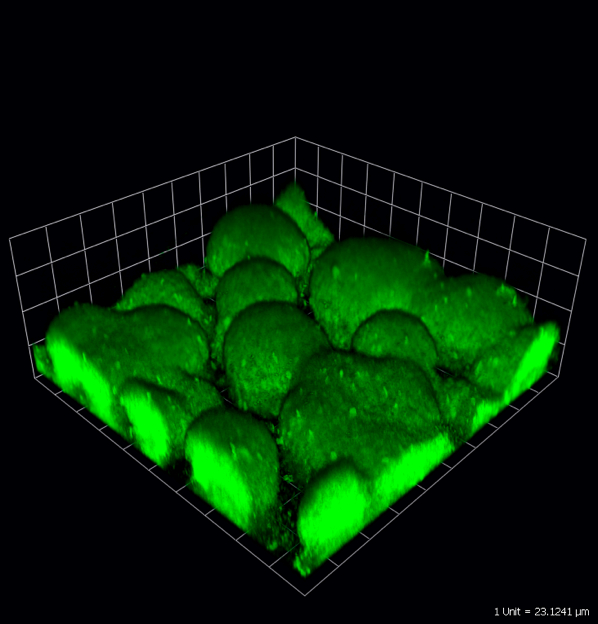 |
||||||
| School of Medicine • University of Washington • Box 357735 • 1705 NE Pacific St • Seattle WA 98195 | ||||||
| Harwood Lab: Biofilms | ||||||
High intracellular cyclic di-GMP (c-di-GMP) promotes biofilm formation in many bacterial species. Like other gram-negative bacteria, P. aerguinosa has many genes encoding proteins with predicted GGDEF domains responsible for the synthesis of c-di-GMP. It also has genes with predicted EAL domains for c-di-GMP hydrolysis. The general parameters of c-di-GMP activity have been established, but environmental inputs that stimulate c-di-GMP synthesis, intracellular trafficking of c-di-GMP and mechanisms of c-di-GMP action are just beginning to be explored in bacteria. In related work we are studying the activity and subcellular localization characteristics of a GGDEF protein called WspR as an avenue to expand our knowledge of the behavior of a GGDEF protein and accompanying c-di-GMP production in individual cells. Our data suggest that growth on an agar surface stimulates the activity of a Wsp signal transduction system that in turn stimulates WspR to synthesize c-di-GMP. This supports the notion that a condition associated with cell-to-cell contact or cell-surface interactions stimulates P. aeruginosa to form biofilms. These studies involve protein biochemistry, mutagenesis and fluorescence microscopy.
|
A Pseudomonas aeruginosa biofilm |
|||||
